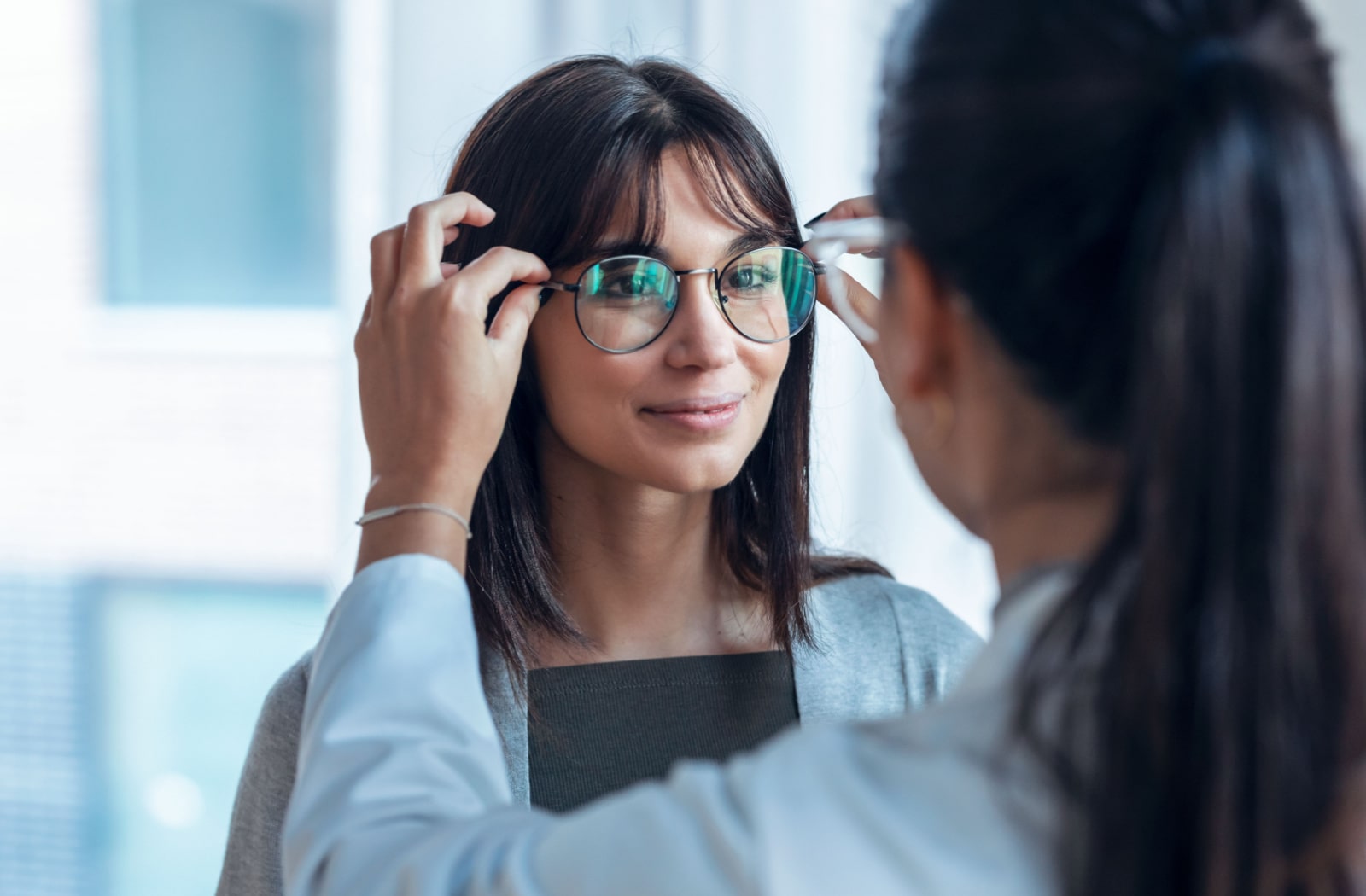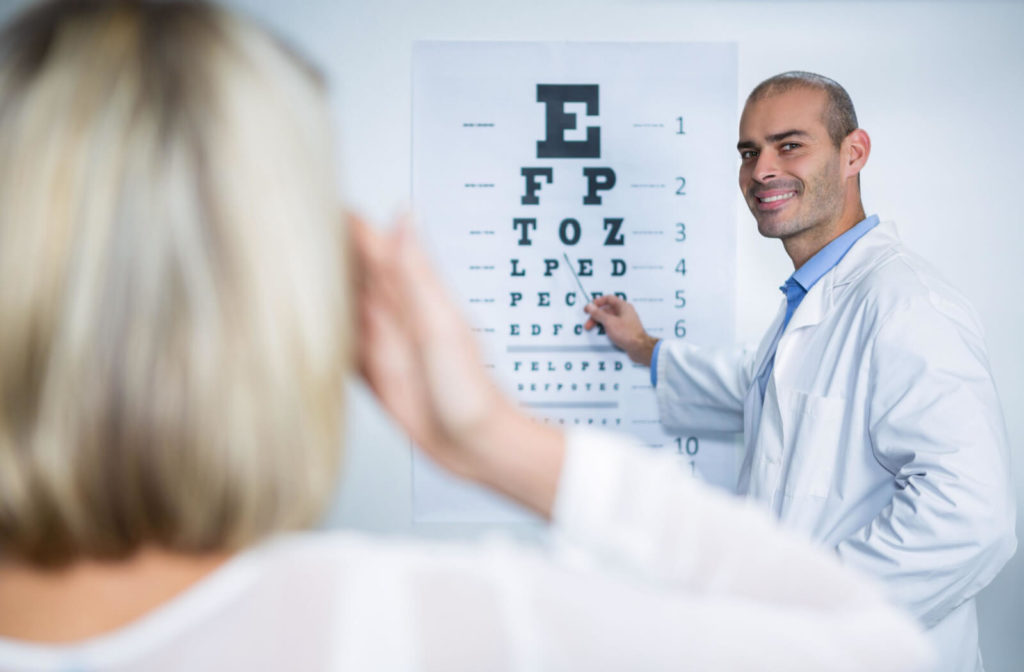The Value of Regular Exams with an Eye Doctor Optometrist
The Value of Regular Exams with an Eye Doctor Optometrist
Blog Article
Discovering the Most Current Technological Advancements in Optometry and What They Mean for Optometrists
From the accuracy of Optical Comprehensibility Tomography to the nuanced understandings supplied by AI-driven diagnostic tools, these developments are setting brand-new requirements in individual evaluation and treatment. As these innovations permeate the method, eye doctors are encountered with the obstacle of embracing these devices to enhance person outcomes.
Innovations in Diagnostic Tools
Advancing the area of optometry, technologies in analysis tools have actually reinvented the method eye care professionals analyze and diagnose eye conditions and visual problems. The previous decade has experienced significant technological developments, making it possible for more thorough and accurate evaluations.
One more secret development is the introduction of innovative corneal topography systems, which map the surface area curvature of the cornea with precision. These tools are particularly helpful for suitable contact lenses and diagnosing corneal problems. Electronic retinal imaging has actually changed traditional ophthalmoscopy, providing thorough, panoramic views of the retina that help with extensive aesthetic evaluations.
The advancement of wavefront aberrometry has actually additionally been important, enabling the analysis of refractive errors with unrivaled accuracy (Eye Doctor Optometrist). This innovation helps in tailoring rehabilitative lenses and improving medical end results for refractive surgical procedures. Jointly, these analysis innovations equip optometrists to supply exceptional individual treatment, making sure very early intervention and customized treatment techniques, ultimately improving visual health end results
AI in Person Management
Structure on the structure of advanced diagnostic tools, the unification of man-made knowledge (AI) in individual monitoring represents a transformative jump for optometry. AI systems are progressively employed to boost efficiency, accuracy, and customization in patient care. By examining substantial quantities of data, AI can recognize patterns and anticipate potential eye problems, making it possible for eye doctors to tailor interventions much more successfully. This capacity is essential in handling chronic eye illness such as glaucoma and diabetic person retinopathy, where very early discovery and continual tracking are key.
Furthermore, AI-driven systems facilitate streamlined client interactions and management procedures. Automated scheduling, digital examinations, and personalized follow-up plans not just enhance individual satisfaction yet also maximize time administration for experts. These systems can triage individuals based on the necessity of their problems, making certain that those in essential requirement receive prompt focus.
In addition, AI enhances decision-making by giving eye doctors with evidence-based recommendations and treatment paths. By integrating information from electronic health records, AI tools provide insights that inform medical choices, lowering the threat of mistakes and boosting patient end results. As AI continues to advance, its duty in person management will likely broaden, reshaping the landscape of optometric treatment.
Advancements in Retinal Imaging
In the realm of optometry, retinal imaging has seen amazing technical advancements that are enhancing diagnostic capabilities and individual treatment. Advancements such as Optical Comprehensibility Tomography (OCT) and fundus digital photography have transformed exactly how optometrists assess the retina and imagine. OCT, particularly, provides high-resolution, cross-sectional images of the retina, permitting the in-depth evaluation of its layers. This capability is very useful for early discovery and administration of conditions like glaucoma, diabetic person retinopathy, and age-related macular deterioration. click
Boosted imaging techniques like OCT angiography are further refining diagnostic precision. Eye Doctor. Such improvements facilitate you can find out more the identification of minute retinal modifications that can signify illness development.
Furthermore, advancements in fabricated intelligence are augmenting retinal imaging by allowing automatic evaluation of huge datasets. These systems help eye doctors in determining patterns a measure of pathology, thus enhancing analysis accuracy and performance. Collectively, these advancements are changing retinal imaging into a foundation of modern eye treatment, improving outcomes and expanding therapeutic opportunities.
Teleoptometry's Growing Duty
Teleoptometry is increasingly coming to be a vital component of eye care, driven by advancements in data and analysis devices. As optometry welcomes digital makeover, teleoptometry helps with remote appointments, permitting eye doctors to extend their services beyond traditional limits. This is specifically useful in rural and underserved locations where access to specialized eye care is commonly minimal. By leveraging high-resolution video clip conferencing and advanced retinal imaging, eye doctors can conduct extensive eye tests from afar, ensuring prompt diagnosis and treatment.
The combination of fabricated intelligence (AI) additional boosts teleoptometry, making it possible for the evaluation of visual data and helping in the discovery of eye conditions such as glaucoma and diabetic person retinopathy. AI-powered algorithms can quickly interpret complicated imaging data, providing eye doctors with important insights that bolster scientific decision-making.
Additionally, teleoptometry supports continuity of treatment with smooth assimilation with electronic health documents (EHRs), permitting eye doctors to keep extensive patient backgrounds. This makes certain that people get constant and individualized treatment also when seeking advice from various practitioners.
Despite these advantages, difficulties stay, including guaranteeing data protection and handling individual assumptions. However, teleoptometry stands for a substantial stride in the direction of even more obtainable, reliable, and patient-centered eye care. As innovation progresses, its role is positioned to broaden better.

Future Patterns in Eye Care
A myriad of cutting-edge fads is established to improve the future of eye treatment, driven click here for more by technical developments and the advancing demands of clients. One substantial trend is the assimilation of synthetic intelligence (AI) in diagnostics, which promises to improve the accuracy and efficiency of eye evaluations. AI formulas can assess large quantities of information from retinal pictures, possibly spotting problems like diabetic retinopathy and glaucoma earlier than typical techniques.
Additionally, personalized medicine is gaining traction in optometry, with genetic screening educating personalized treatment strategies. This strategy intends to maximize patient results by customizing interventions to specific hereditary profiles. Wearable technology, such as clever contact lenses, is also coming up, supplying real-time surveillance of intraocular pressure or glucose degrees, hence giving constant insights into eye and systemic wellness.
The adoption of augmented reality (AR) and online fact (VR) in training and client education is another arising trend. These modern technologies offer immersive experiences that can boost understanding and skills both for individuals and eye doctors. As these trends progress, eye doctors must stay abreast of technological innovations to offer sophisticated treatment, making sure improved client end results and fulfillment in the vibrant landscape of eye care.
Final Thought

Collectively, these analysis advancements empower eye doctors to supply remarkable client care, guaranteeing very early treatment and tailored treatment strategies, inevitably enhancing visual wellness end results.

As these modern technologies continue to advance, optometrists have to adapt and integrate them right into practice, inevitably enhancing process efficiency and raising the standard of eye care provided to people.
Report this page